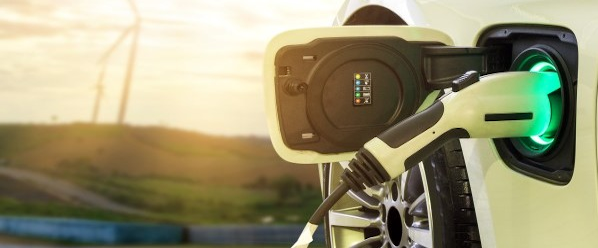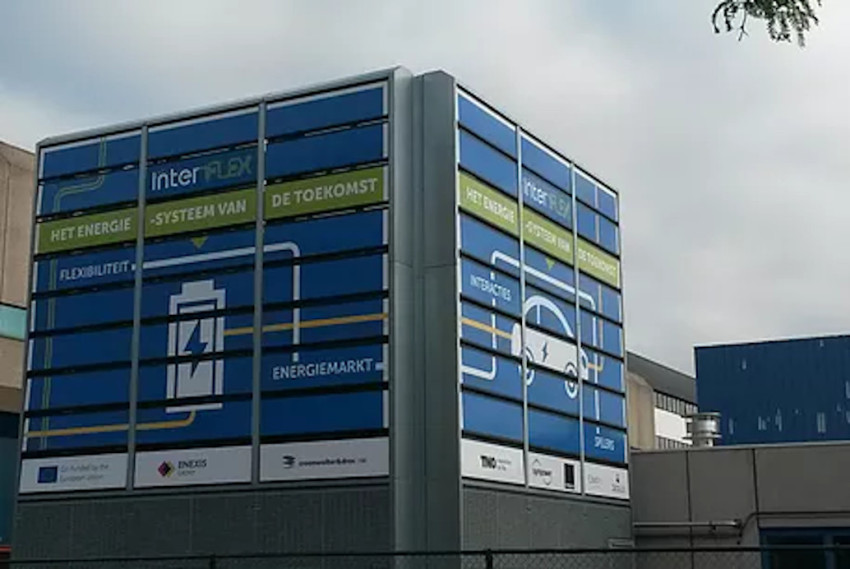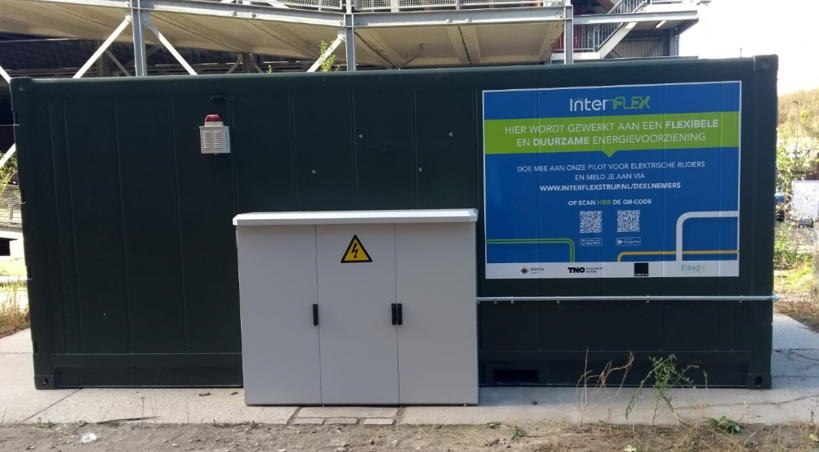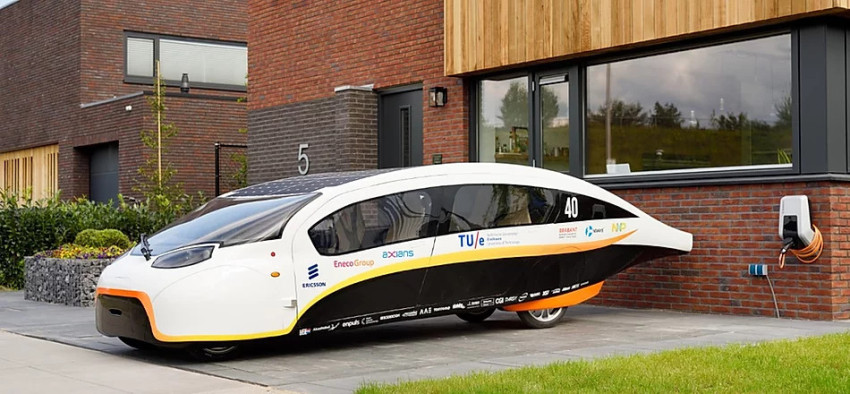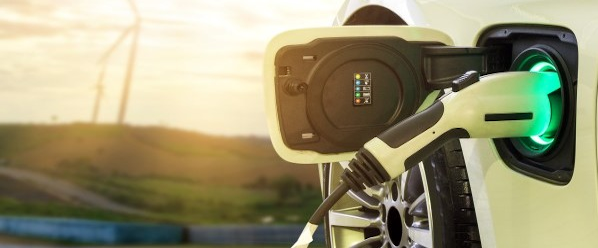
Interflex: Grid, batteries, PV and electric cars combined to prevent congestion
Organized together with faculty Electrical Engineering TU/e and Enexis
Date: Thursday, October 29, 2020
Time: 16.00 – 17.30
Location: Online or FLUX, room 0.01, TU/e, Eindhoven, to be decided
Carbon neutral energy supply
To reach the goals of the Paris agreement (2015) a carbon neutral energy supply is needed. This means a shift to renewable energy sources (RES) like electricity from solar cells (PV) and wind. Moreover, the use of fossil fuels will be replaced by electric energy increasing the demand considerably. This leads to an electrical infrastructure which needs to cope with the large variability of supply and demand in a much more distributed supply system.
Still there are the requirements for reliability and stability of the electricity supply.
Interflex project and demonstrator at Strijp-S
Distribution system operators are investigating methods to facilitate a high penetration of distributed energy resources while maintaining network reliability and stability. Testing and demonstrating those methods is the goal of the Interflex project. It is an H2020 project in 5 EU countries. Enexis is in the lead of the Dutch part. A demonstrator has been realized at the living-lab of Strijp-S (Eindhoven) to show/test new forms of congestion management.
The demonstrator is a grid system which contains a variable source (PV), a battery as a buffer and load form apartment buildings and Electric Vehicle (EV) charging. Hardware, software and interfaces have been developed to introduce flexibility by interacting with the EV owners to adapt the load schedule of the EV’s and adapt battery and PV.
Grid Management System and load forecast
Partners of the project concentrate on realizing the functionality.
Important aspects are:
-
The Grid Management System which does load forcasting and flex activation (Enexis)
-
Load forecasting to be able to predict the needs in advance (TU/e, Enexis). On a day-ahead basis in this project.
-
Smart Charging of the EV charging points in interaction with the EV owner (Elaadnl, Jedlix)
-
Smart Storage for congestion management (Sympower, CW&D
-
Market trading platforms, to allow market parties to connect with the flexibility sources and trade with Enexis (TNO, Sympower, Jedlix) .
All the elements of the system must communicate to enable the grid management. Protocols are available like: Universal Smart Energy Framework (USEF), Energy Flexibility Interface (EFI), Open Charge Point Interface (OCPI) and vehicle to grid (V2G) functionality is realized. They have been successfully used in the project and improvements were discovered and made.
Flexibility market
The congestion problems are resolved by a (local) flexibility market. Flexibility is defined as “a power adjustment with a specific size and direction, sustained at a given moment for a given duration from a specific location in the network”.
Flexibility can be requested by the transmission system operator and offered by aggregators. If the request and demand fit at an agreed price the flexibility is sold. The trade will be done ahead of time and in time units of 15 minutes. The trading has been automated and included in the demonstrator. For a proper request as well as offer a reliable forecast of energy demand and available flexibility from smart charging and smart storage is essential.
Interflex website https://www.interflexstrijp.nl
Here to see the webinar on Oct 29 again
For info on possibilities for a carbon free energy system in 2050 see the EnergyNL2050 results (Energy System NL 2050) https://www.kivi.nl/afdelingen/elektrotechniek/energieplan.
Name and contact for Information
Dr.Ir. Steven Luitjens Member of the Royal Netherlands Society of Engineers, department Electrical Engineering, Team EnergyNL2050 Luitjenssb@hccnet.nl

